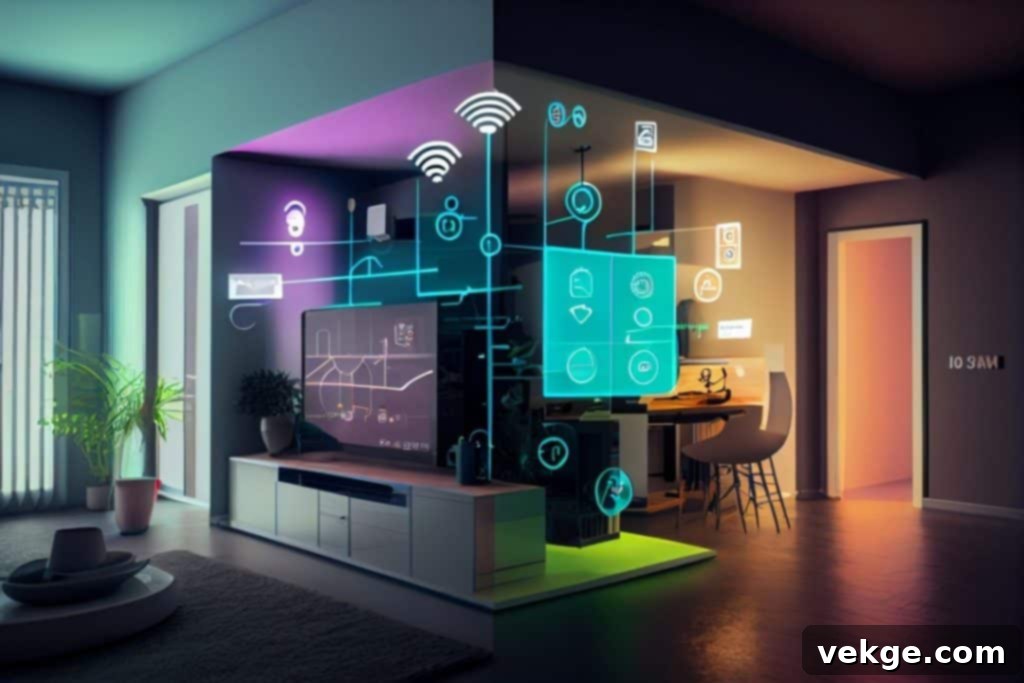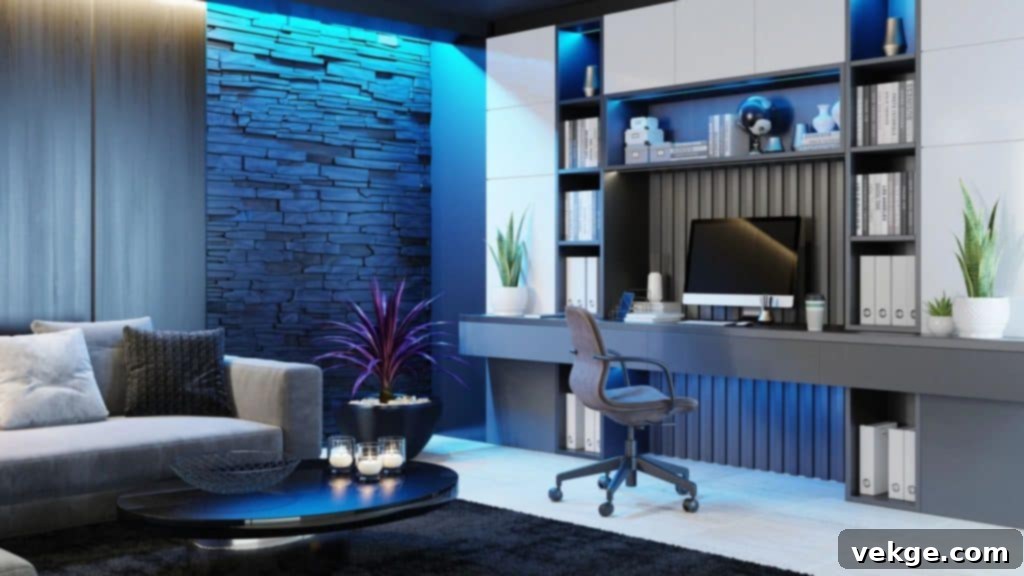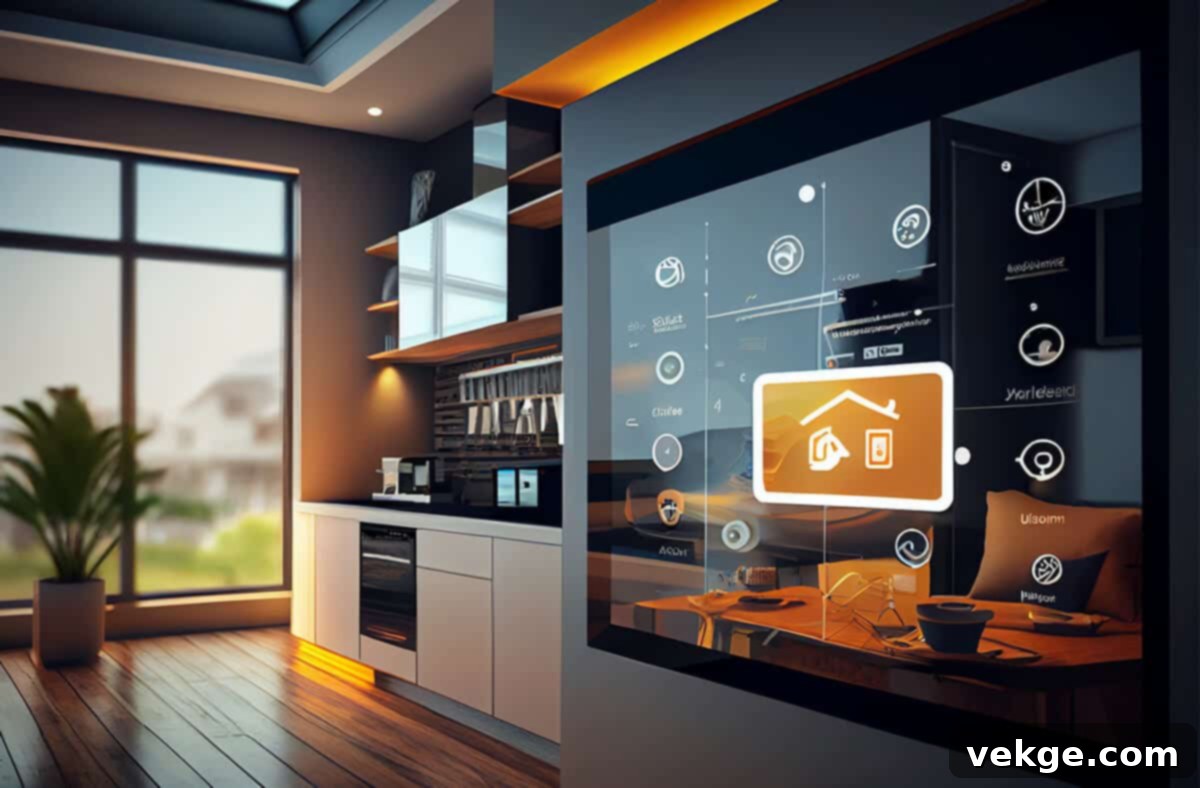Seamlessly Integrate Smart Technology into Your Traditional Home: Modernizing with Elegance
In an era where modern technology is woven into the very fabric of our daily lives, convenience and comfort have become readily accessible. From the moment we wake to the time we rest, smart devices enhance almost every facet of our existence, transforming once futuristic concepts of smart living into tangible, real-world experiences. Contemporary homes often embrace this technological revolution with open arms, featuring a myriad of gadgets and automated systems.
However, for those who cherish the timeless beauty and unique character of a traditional home, the thought of integrating cutting-edge smart technology can seem daunting. The challenge lies in introducing modern conveniences without compromising the inherent charm, architectural integrity, and classic aesthetic that define such spaces. The goal is not to turn a traditional home into a sterile, futuristic box, but rather to thoughtfully weave in smart solutions that complement, rather than clash with, its existing allure.
This comprehensive guide will explore the essential considerations and innovative approaches that allow you to bring your traditional home into perfect sync with smart technology. We’ll delve into practical strategies for achieving a harmonious blend, ensuring that your home remains both aesthetically pleasing and technologically advanced, delivering the best of both worlds.
Essential Factors for Incorporating Smart Tech into Traditional Homes

True smart home integration goes beyond simply placing smart devices within your living space. It’s about the seamless, thoughtful addition of technology that not only enhances your daily life but also preserves and even elevates the inherent beauty of your home’s interior. This philosophy extends to every element, from considering various types of ceilings and their designs for elegant smart lighting solutions to ensuring that every gadget feels like an intentional part of the decor.
The core principle is to use smart technology to enrich the living experience, providing unparalleled convenience and efficiency, without ever compromising the cherished aesthetics of your traditional home. Let’s delve into the key factors that will enable you to make your home tech-convenient while maintaining its timeless style.
1. Color and Finish Compatibility: Blending with Your Palette
The visual appearance of smart gadgets is just as critical as their functionality when it comes to blending them harmoniously with the overall appeal of your traditional home. A careful eye for design can transform a functional piece of technology into a charming accent that enhances your interior. Consider the existing color scheme, material finishes, and overall style of each room.
For instance, instead of opting for a standard white or black smart device, explore options that come in a range of colors, metallics, or even wood-grain finishes. A smart thermostat with a brushed bronze finish might seamlessly integrate into a room with antique brass fixtures, while a smart speaker wrapped in fabric might disappear into a bookshelf. In the kitchen, select smart appliances that complement the cabinet colors or wall tiles. A sleek, stainless-steel smart oven might contrast beautifully with a rustic wooden kitchen, or a matte-finish smart coffee maker could match your countertop’s natural stone texture. Even seemingly minor details, like the finish of smart light switches or power outlets, can contribute significantly to the overall aesthetic coherence.
2. Size and Proportion: Maintaining Visual Balance
The size and proportion of smart devices are paramount to maintaining the visual harmony of your home. The goal is to enhance your living space, not disrupt its carefully curated balance. Devices should integrate effortlessly, fitting perfectly within their designated spots rather than appearing oversized, clunky, or out of place amidst other elements.
When selecting smart gadgets, consider the scale of the room and the furniture within it. A large smart display might overwhelm a small study, while a compact one could be perfectly integrated. For major appliances, such as a smart refrigerator, ensure its size is appropriate for your kitchen’s layout and design. An excessively large unit could dominate the space, diminishing the visual importance of custom cabinetry or other beloved kitchen features. Similarly, discreet smart sensors should be small enough to be unobtrusive, blending into door frames or wall corners. Always measure your space and compare it to device dimensions to ensure a perfect fit that respects the room’s overall design and flow.
3. Addressing Wire Issues: The Art of Discreet Connectivity
One of the most common challenges in integrating technology into any home, particularly a traditional one, is managing unsightly wires and cables. A tangled mess of wires can quickly detract from even the most beautiful interior, disrupting the calm and elegant atmosphere. While the market offers an increasing number of wireless solutions, many essential smart devices still require a direct power source or network connection.
However, there’s no need to despair. With thoughtful planning and creative solutions, you can effectively conceal or even eliminate cable clutter:
- Concealed Wiring: For renovations or new constructions, consider in-wall wiring for media centers, smart TVs, and built-in speakers. This provides the cleanest look. In existing homes, wires can be channeled through crown molding, baseboards, or behind furniture, making them virtually invisible. Decorative cable management channels, available in various colors and styles, can also be painted to match your walls.
- Wireless Priority: Embrace genuinely wireless alternatives whenever possible. Opt for smart lights, speakers, security cameras, and even doorbell systems that operate via Wi-Fi, Bluetooth, or dedicated smart home protocols like Zigbee and Z-Wave. These devices often require only a single power connection, if any, and can be controlled remotely via smartphone apps or voice commands, significantly reducing cable dependency.
- Smart Hubs and Routers: Position central smart home hubs and Wi-Fi routers strategically in less conspicuous areas, perhaps inside a cabinet or a decorative box, while ensuring optimal signal strength.
- Furniture with Built-in Management: Look for media consoles, desks, and nightstands that incorporate integrated cable management systems, offering a tidy solution for charging cables and device power cords.
- Color-Coordinated Cables: As a last resort, if wires must be visible, choose cables that match the color of your walls, baseboards, or flooring to help them blend in. This subtle trick can make a surprising difference in reducing their visual impact.
The ultimate goal is an uncluttered environment where the technology works seamlessly in the background, allowing the traditional charm of your home to shine without visual distractions.
4. Appreciating the Contrast: A Deliberate Design Choice
Sometimes, the most effective way to integrate smart devices isn’t by making them disappear, but by deliberately using contrast to create visual interest. This technique allows smart technology to stand out as a modern accent within a traditional setting, without appearing out of place. The key is balance and intentionality.
For example, if you have a richly detailed antique wooden table, placing a sleek, minimalist smart display with a matte black or white finish can create an intriguing contrast that highlights both the modern device and the traditional furniture. This juxtaposition can bring a contemporary edge to classic decor. Similarly, a vintage-inspired lamp could be made smart with a discreet smart bulb, or a modern, artistic smart speaker could become a focal point in a room with a more subdued, classic color scheme. The trick is to avoid overdoing it; limit yourself to a few carefully chosen contrasting elements to maintain sophistication and prevent visual chaos. This approach demonstrates a thoughtful blend of eras, celebrating both historical charm and futuristic innovation.
5. Seamless Integration with Existing Decor and Architecture
Beyond color and size, consider how smart devices interact with your home’s architectural details and existing decor. Traditional homes often boast intricate moldings, period-specific hardware, and unique structural elements. The best smart home integrations respect and even highlight these features.
Opt for smart switches and outlets that come in vintage-inspired designs or with finishes like antique brass or bronze that complement traditional hardware. Choose motion sensors or door/window sensors that are small, discreet, and can be painted to match their surroundings. Smart shades and blinds can be integrated within window casings, preserving the look of original windows while offering automated light control and privacy. The aim is for the technology to feel as if it has always been there, an organic part of the home’s design rather than an add-on. For example, a smart doorbell with a classic design can replace an older one without disrupting the exterior aesthetic.
6. Preserving Architectural Details and Historical Integrity
For homes with significant historical value, preserving original architectural details is paramount. When installing smart technology, prioritize solutions that require minimal invasion or irreversible changes. Wireless, battery-powered sensors, smart bulbs that fit into existing fixtures, and smart plugs that convert traditional outlets are excellent choices that avoid drilling or extensive rewiring.
If new wiring is essential, consider routing it through less visible areas, such as basements, attics, or behind existing wall panels, rather than damaging original plaster or woodwork. Consult with professionals who specialize in historic renovations to ensure any modifications are done thoughtfully and reversibly, maintaining the integrity and value of your traditional home for generations to come. The beauty of smart technology is its adaptability, allowing for discreet enhancements without erasing history.
Customize Lighting in Your Living Space: Setting the Mood with Smart Illumination

One of the most impactful and easily integrated smart technologies for traditional homes is customized lighting. Homeowners can truly tailor their living spaces to their precise wants and needs, transforming ambiance at the touch of a button or a simple voice command. From smartphone-controlled dimmers to color-changing bulbs and remotely managed fixtures, smart lighting empowers you to adjust every aspect of your home’s illumination to perfectly match your mood, activity, or time of day.
Smart lighting offers countless benefits: you can create warm, inviting light for cozy evenings, bright and invigorating light for focused work, or even dynamic color scenes for entertaining. Beyond aesthetics, smart lighting enhances convenience, allowing you to turn off all lights with a single command as you leave, or schedule lights to mimic occupancy while you’re away, boosting security. It also contributes to energy efficiency by allowing precise control and scheduling, reducing unnecessary power consumption.
Imagine effortlessly transforming your home’s atmosphere from a vibrant party setting to a relaxed movie night ambiance, all controlled via your smartphone or a discreet voice assistant. Smart technology can truly surround your home with wonders that once felt like a futuristic fantasy, providing unparalleled comfort, efficiency, and customizable beauty.
Conclusion: Harmonizing Heritage with Innovation
The benefits of smart homes extend far beyond mere style and convenience. A thoughtfully implemented smart gadget can serve as a perfect enhancement for your home’s ambiance, while also contributing to safety, energy efficiency, and overall quality of life. In today’s world, smart technology has evolved from a luxury to a near necessity, elevating our living standards in countless ways.
While modern homes are often designed with these new-age gadgets in mind, traditional home setups require a more nuanced and attentive approach. The key lies in the careful, deliberate addition of technology. By focusing on compatibility in terms of color, size, and finish, diligently managing wires, and appreciating the subtle art of contrast, you can seamlessly upgrade your traditional home into a tech-friendly haven without sacrificing its beloved character.
You have the power to design your home precisely according to your needs, making all the required additions with an eye towards aesthetic cohesion. By merging the timeless elegance of traditional homes with the innovative capabilities of modern technology, you unlock a realm of possibilities. Remember, a minimalistic and integrated approach is often best for creating a truly convenient, beautiful, and intelligent living space. We sincerely hope this article has provided valuable insights and inspiration for exploring how smart technology can be harmoniously combined with the enduring charm of traditional homes. Let us know if you found the content helpful!
